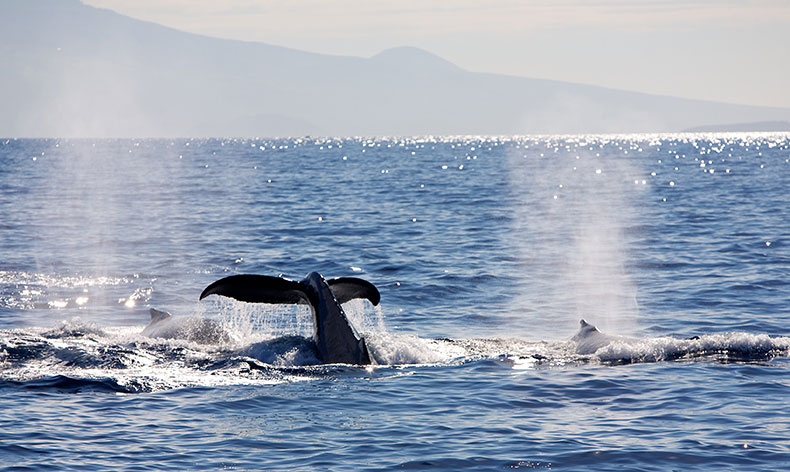
Summary and Findings
The Hawaiian Islands Humpback Whale National Marine Sanctuary (sanctuary) was designated to protect the humpback whale (Megaptera novaeangliae) and its habitat in Hawai'i. The sanctuary enables citizens and government to work collectively on safeguarding humpback whale breeding and calving range in waters around the main Hawaiian Islands, an area that supports more than half of the North Pacific humpback whale population. Encompassing 3,548 square kilometers (1,370 square miles) of federal and state waters surrounding the main Hawaiian Islands, the sanctuary extends from the shoreline to the 100-fathom isobath (183-meter or 600-foot depth) and is composed of five separate marine protected areas (MPAs) accessible from six of the eight main Hawaiian Islands. The sanctuary's configuration presents unique challenges and opportunities for protecting sanctuary resources, developing programs and increasing public awareness of humpback whales throughout the state. Through management, resource protection, education, outreach, research and cultural activities, the sanctuary strives to protect humpback whales and their habitat in Hawai'i. This continued protection is crucial to the long-term recovery and conservation of the species.
The sanctuary is supported by the U.S. Department of Commerce's National Oceanic and Atmospheric Administration (NOAA) and administered jointly through a compact agreement and memorandum of understanding with the state of Hawai'i. The sanctuary was congressionally designated in 1992 by the Hawaiian Islands National Marine Sanctuary Act and was fully established in 1997 with the approval of the sanctuary's first management plan and acceptance of the final environmental impact statement by the state of Hawai'i. The management plan for the sanctuary was last revised in 2002. In 2007, the sanctuary began a second management plan review process to review the effectiveness of site programs and policies relative to the sanctuary's mandated goals. Although this is a multi-year process, this condition report provides an important baseline for the status of sanctuary resources at the beginning of the management plan review process.
The responses to the set of questions found in this report focus primarily on the effects, or potential effects, of pressures on the sanctuary as they relate to humpback whales and their habitat, the primary resource targets of the sanctuary. This condition report primarily addresses resources and pressures on those resources over which the sanctuary has authority. The findings of this report conclude that the resources protected by the sanctuary appear to be in "good" to "fair/poor" condition. Water quality in the sanctuary as it relates to humpback whales appears to be in "good" to "good/fair" condition because it is not likely to pose a threat to humpback whales. This is because most water quality issues occur in nearshore waters, and humpback whales do not feed while wintering in Hawaiian waters. Habitats used by humpback whales in the sanctuary are in "good/fair" condition because some preferred habitats are sites of human activities, including an increasing number of artificial reefs.
The status of humpback whales is rated as "good/fair"; however, their health is rated as "fair." Although humpback whale abundance is increasing in the sanctuary, the overall health rating is "fair" because there has been an increase in the number of reported collisions, entanglements and associated impacts (e.g., lesions and impairment of movement and other important behaviors). Entanglement and whale-vessel collisions have been widely identified as the primary human cause of mortality for humpback whales, both in Hawai'i and around the world. Therefore, these two issues have been identified as immediate and pressing issues for the sanctuary.
This condition report also includes the most up-to-date information from the North Pacific-wide research project, Structure of Populations, Levels of Abundance and Status of Humpbacks (SPLASH). SPLASH is the most comprehensive humpback whale research study ever undertaken for any population of whales in any ocean. The primary objectives of the SPLASH project are to improve the description of the stock structure of humpback whales in the North Pacific, to understand the abundance and trends of these stocks, and to assess the human impact on them. The program is a cooperative effort of researchers from the United States, Canada, Mexico, Japan, Russia, the Philippines and Central America. Data is collected primarily through photo-identification of whale flukes and genetic analysis of tissue samples in the humpback whales' breeding and feeding grounds. The Hawaiian Islands Humpback Whale National Marine Sanctuary has played a central role in initiating, funding and coordinating this project.

